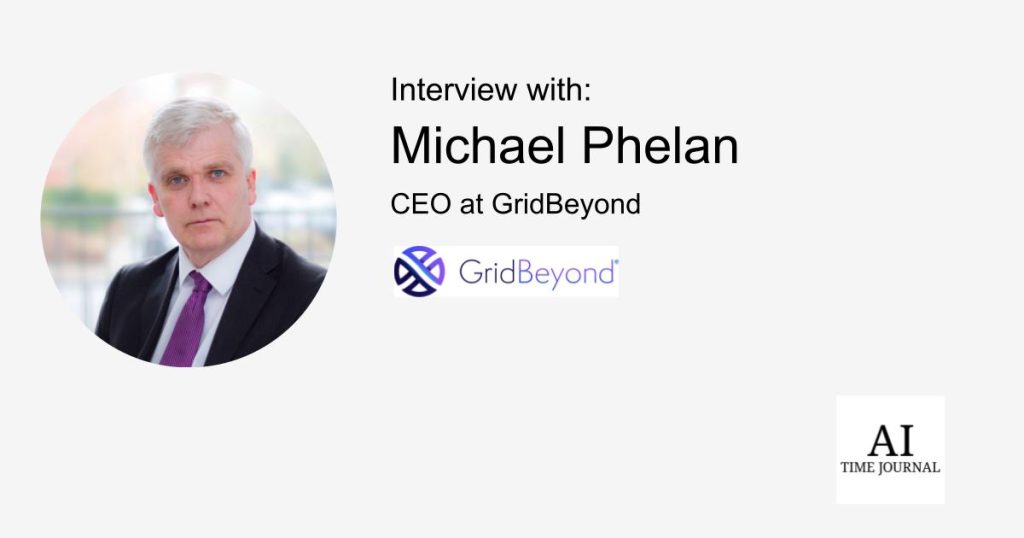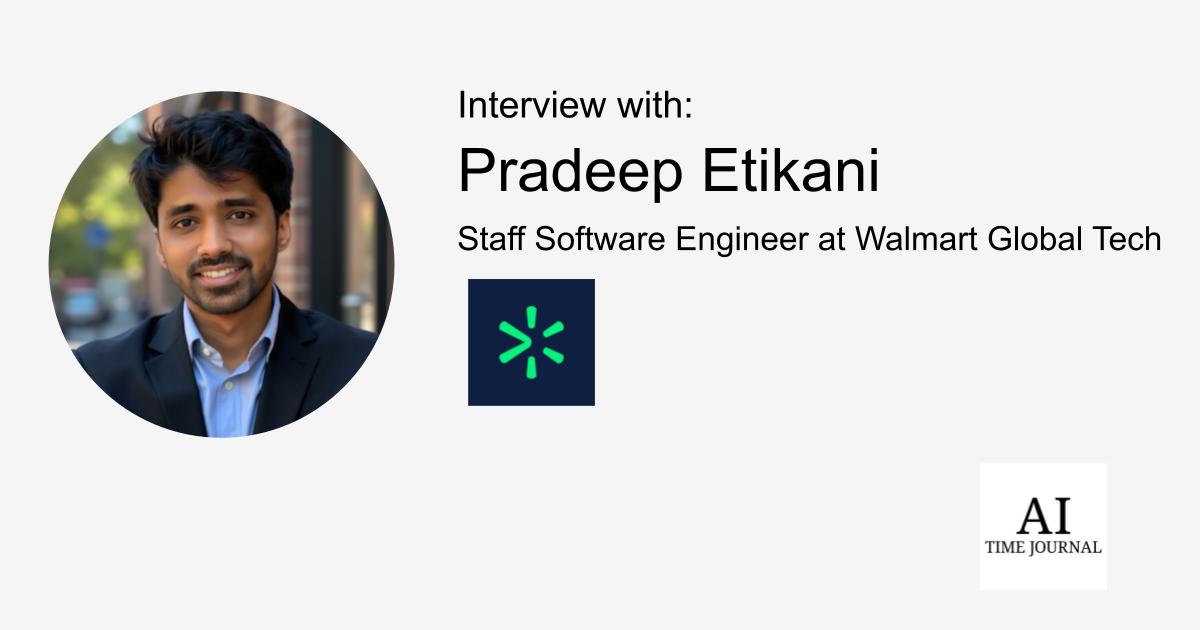
Michael Phelan, Co-founder and CEO of GridBeyond, brings a wealth of experience from roles at industry giants like Philips and Toshiba to his current venture in the energy sector. His journey into energy sustainability began with pivotal insights during his tenure at companies focused on automation systems for power stations and distribution grids. Recognizing the critical need for flexibility and storage to manage renewable energy sources, Michael founded GridBeyond to address these challenges. Under his leadership, GridBeyond has become a key player in the global energy transition, balancing technological advancements with strategic sustainability goals. As the company continues to innovate with AI, IoT, and cloud technologies, it enhances resource management and supports activities such as grid balancing and asset optimization. With recent funding, GridBeyond aims to further its capabilities in AI-driven energy solutions, reinforcing its commitment to a sustainable future.
Having transitioned from roles in automation and electronics with giants like Philips and Toshiba to co-founding GridBeyond, could you share what pivotal moments or insights led you to venture into the energy sector with a focus on sustainability?
During my career, I also worked with smaller companies too that provide automation systems into substations, distribution automation, power stations and factories. So, I understood how they worked and what the grid might need. I recognized the growing need and opportunities for flexibility and storage to balance and manage intermittent renewables – which was the primary motivation for creating GridBeyond.
Under your leadership, GridBeyond has evolved into a key player in the global energy transition. How do you balance the pressures of rapid technological advancements with the strategic needs of a business focused on sustainability?
From a technology standpoint, three main technologies drive everything: AI, the Internet of Things (IoT), and the Cloud. These technologies enable resource management, remote monitoring, and detailed reporting, which are crucial for implementing the energy transition. They support activities like 24/7 power matching, grid balancing, optimization of assets such as batteries, and managing flexibility and imbalances in renewable energy sources like wind and solar, as we do at GridBeyond.
Reflecting on the recent funding round GridBeyond secured, how do you envision this financial boost transforming your technological capabilities, especially concerning AI and automation in energy solutions?
We plan to enhance our digital twins for demand response, storage, and generation. Additionally, we aim to develop forecasting tools for renewable energy load and energy prices across various markets. We are also interested in leveraging AI insights to improve sustainability, enable 24/7 power matching, and enhance predictive maintenance and product quality.
You’ve been at the helm of GridBeyond since its inception in 2010. What are some of the most unexpected challenges you’ve faced in the energy sector, and how have these influenced your approach to leadership and innovation?
Over the years, we’ve faced challenges from regulators who can sometimes block markets, causing delays of six months to a year. A current example is in California, where the regulator and governor are reducing budgets for distributed energy backup, asset funding, and demand-side generation support, while favoring gas and diesel generators. This appears to be a step in the wrong direction and is likely to increase pollution, especially in poorer areas.
Given the dynamic nature of global energy markets, how does GridBeyond ensure its solutions are adaptable and resilient across different regulatory environments and market conditions?
We have regulatory experts covering all major markets in the US, including California, Texas, PJM, SPP, New England, and New York. This allows us to stay informed about market dynamics—whether they are advancing towards renewable energy transitions or hindering them, driven by economic factors or government policy. We also monitor the pace of these transitions and understand the key influencers, whether driven by consumer demand and corporations or regulatory and governmental actions. This knowledge provides us with a comprehensive understanding of market conditions. Additionally, we have similar operations in Australia, Japan, the UK, and Ireland.
As someone deeply involved in the digitalization, decarbonization, and decentralization of energy networks, what do you see as the next big trend or innovation that could revolutionize the energy sector?
With the increasing adoption and capabilities of AI, we anticipate significant growth in data centers. At the same time, as the US emphasizes domestic manufacturing, we’re likely to witness a rise in both data centers and factories within the country. This surge in power demand may cause grid connection problems. GridBeyond is able to help companies manage this challenge using batteries, solar power, and generators to stabilize connections and facilitate timely construction of these facilities.
The second trend involves the ‘Electrification of Things,’ such as transportation and heating, which could strain distribution grids due to increased demands. However, technologies like EV chargers and heat pumps offer flexibility; they can adjust charging or operating times in response to grid pressures. These technologies, which initially pose challenges, also can alleviate grid constraints in some instances.
Michael, can you discuss how GridBeyond’s approach to smart energy management not only benefits businesses but also contributes to the stability and sustainability of the wider electricity grid?
Our energy management system can identify wastage and opportunities for upgrades. For instance, excessive night-time usage might indicate inefficient motors or production processes. We can optimize tariff load shifting and manage demand charges to improve grid connectivity efficiency. Additionally, we offer grid services that reduce reliance on dirtier thermal power plants, which would otherwise need to activate if batteries and flexible loads weren’t available. This comprehensive approach helps enhance energy efficiency and sustainability.
Considering your extensive experience with developing markets in Europe, Asia, and America, what unique opportunities or obstacles do these regions present in terms of advancing sustainable energy technologies?
Certain regions are more suitable for energy technologies like solar and wind. However, some groups, having already invested in coal, oil, or gas plants, feel conflicted. These groups often try to influence regulators to prevent investment in newer technologies from being integrated into the grid. Some may claim it’s easier to extract oil and gas from the ground through methods like fracking than to install solar panels and harness solar energy. This perspective suggests that some people believe it is simpler to rely on traditional fossil fuel extraction rather than investing in renewable energy sources like solar power.
With AI and automation being integral to modern energy solutions, could you elaborate on how these technologies are enhancing GridBeyond’s service offerings and customer engagement?
Machine Learning and Deep Learning enable us to meet the demands of rapid forecasting. This advanced technology allows forecasting systems and solvers to make decisions on how to dispatch assets in as little as five minutes, a capability that wasn’t possible before AI. This innovation helps businesses manage both short-term and long-term risks and is applicable to municipalities, community choice aggregators, cooperatives, and utilities across the US and worldwide.
AI plays a crucial role in balancing the grid, especially as renewable energy sources make our supply more intermittent. Meanwhile, demand can become more flexible with the increasing use of electric vehicles (EVs) and heat pumps, which act as mobile and stationary batteries, respectively. Our energy system is shifting from a centralized thermal model, where power is generated as needed, to a flexible demand system that adapts to the variable nature of renewable energy generation.
Finally, as someone who has been part of several successful exits and now deeply engaged in the energy sector’s transformation, what advice would you give to entrepreneurs aspiring to make an impact in this space?
The first step is to identify an emerging market need where there is a clear customer demand and work to meet that need. This will generate initial revenue and profit. After that, you can either introduce the same product to other emerging markets or offer additional products to the same customers. For example, at GridBeyond, we initially sold demand response services to customers. Over time, we expanded our offerings to include pathways to zero carbon, green procurement, and other related products. Each of these new offerings built upon the success of our initial product.

 6 months ago
83
6 months ago
83







 English (US) ·
English (US) ·